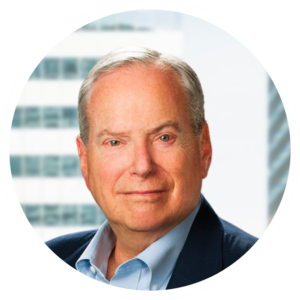6 Questions for How the 2024 Election will Affect Education and Philanthropy
January 19, 2024 BlogI opened 2023 thinking about philanthropic innovation. And throughout the year, through our Voices of Impact series, we…
As we embrace 2024, our higher education consulting team has identified 10 big ideas that the sector will face in the coming year, including:
While 2024 is ripe for evolution, it’s clear that leaders who proactively address these dynamics will be most likely to excel. The Tyton team is ready to assist we look forward to helping you navigate these opportunities in 2024.
 Kristen Fox, Senior Advisor
Kristen Fox, Senior AdvisorWhen asked why they pursue a college degree, the most common motivation shared by 58% of learners of all ages is job and career outcomes. Additionally, 80% of learners say they believe it is important to have on-the-job learning opportunities as part of their education. In parallel, employers are experiencing acute worker shortages with talent gaps in key fields and generative AI changing the world of work. Throw in declining public trust in higher education’s economic value, and the call to action to improve economic outcomes for students is clear.
In response, employers and institutions will increase collaboration to design skills-aligned pathways that prepare students for the first job and provide durable skills for the next job that support a lifetime of learning. In conjunction with degrees, embedded short-form credentials, novel apprenticeship models, and other high-impact interventions (including experiential learning models) enable a broader set of pathways to meet student needs. Look to work in Connecticut and Michigan, where industry leaders and institutions are forming collaborative models to respond in real-time. Providing potential tailwinds, short-term Pell is a rare bipartisan proposal to enable federal Pell Grants to be used for short-term workforce programs.
2024 will be a year in which those institutions, employers, and edtech enablers that work aggressively and collaboratively to address talent gaps will be positioned to win.
 Cathy Shaw, Managing Director
Cathy Shaw, Managing DirectorThrough our longitudinal market insights initiatives, Time for Class, Driving Toward a Degree, and Listening to Learners, learners revealed to us that the more they felt their institution cared about their wellbeing, the more they felt they belonged at their school (and we’ve all read the research correlating stronger feelings of belonging to stronger academic outcomes).
College students need to feel safe both physically and emotionally to learn. When learners feel secure, they are free to focus on courses and extracurricular activities that build engagement with their learning community. Similarly, students who feel emotionally safe on campus have the confidence to express themselves, take risks, work collaboratively, and create meaningful connections with their peers, faculty, and staff. By these measures, higher education failed to provide safety conditions necessary for learning in 2023.
In 2023, we saw several bomb threats called into HBCUs, mass shootings at UNLV, and as the Israel-Hamas war continues and as anti-LGBTQ+ legislation continues to track in 47 states, we predict that all institutions will need to consider the ways to better support students in feeling safe enough to focus on learning. This includes investment in mental health support as our research shows that students who have interacted with mental health services are more likely to believe their school cares about their health and wellbeing.
 Greg Finkelstein, Managing Director
Greg Finkelstein, Managing Director The notion of machine learning (ML) has been around for over 50 years. In recent years, ML has birthed a variety of powerful capabilities and new acronyms (from AI to NLP to NLU to RPA). At a macro level, these flavors of machine intelligence traverse two primary fields of play – teach it and allow it to do something better, faster, and cheaper; or build it with the root horsepower to teach itself.
What does this mean for colleges and universities and the technology companies that serve them? It means an expanded suite of partners and toolkits that can enable institutions to better support their two most difficult jobs – student learning and faculty teaching. As we enter 2024, we see three themes:
 Gates Bryant, Partner
Gates Bryant, Partner In 2024, higher education will need to embrace the other AI. Academic integrity in higher education has been eroding for quite some time, and the launch and rapid adoption of generative artificial intelligence has only highlighted what many have already been concerned about. It’s not just student cheating, as reported in Nature, 2023 was a “bumper year for retractions of academic journal articles” with more than 10,000 papers retracted. While higher education is working hard to combat the reckoning calls about the value of a postsecondary degree, higher education policy makers, institutional leaders, and the pantheon of vendors that support them will have to increasingly embed accountability systems that validate learning and assess competency in new and rigorous ways in 2024 and beyond.
 Annie Malone, Associate
Annie Malone, AssociateAs soaring tuition costs create more financial hoops for prospective and current college students to jump through, we will increasingly see a relatively unconventional option to help pay for college: cooperative education programs, or “co-ops.” These programs create months-long breaks in a student’s academic schedule and allow them to work full-time, ideally at a company whose work is aligned with their field of study. Though some students who do co-ops must complete summer classes or additional years of study to accommodate these breaks, the number of credits they complete is on par with students attending more traditional four-year universities. Importantly, most students can earn a full-time salary while on co-op, which affords them greater financial freedom than if they were only able to work part-time minimum-wage jobs or summer internships.
As a recent graduate of Northeastern University in Boston, co-op was an essential component of how I financed my education, almost as important as the financial aid I received. A bonus of my experience was that it led me directly to the field of strategy consulting and to Tyton Partners, where I’ve now worked full-time for almost two years (following a seven-month co-op). Many more college students should pursue a similar path in 2024, given both the financial and career benefits of cooperative education. Will enough institutions offer them?
 Mike Goldstein, Managing Director
Mike Goldstein, Managing DirectorThis year will see the implementation of a flurry of rules affecting the federal student aid programs intended “to hold colleges accountable and protect students from unaffordable college debt.” Significant is a shift in focus from a dwindling number of for-profits to public and non-profit institutions broadly – and the entities that oversee them.
 Kerry Condon, Principal
Kerry Condon, PrincipalShort-term Pell has to make it out of the House, through the Senate, and then receive appropriation of funds. And what if it does?
This year saw higher education continuing to awaken to the demands of students, employers, and policymakers for short-term skills-based credentials that are both portable in the labor market and stackable towards a credential. The University of Texas System and Marshall University, for example, was all in on microcredentials this year. Through Workforce Pell Grants, Congress is formally recognizing these programs as an essential part of the higher education landscape and affording the new majority learners access.
The opportunity lies with higher education now – how will institutions set themselves up for success in accessing this potential new source of funding? My time working in the UNC System and at a highly innovative HBCU in southern Dallas leads me to three predictions:
 Nicholas Java, Director
Nicholas Java, DirectorThese innovative course materials models automatically bill students on a course-by-course level (inclusive access), or a flat fee for all course materials (equitable access). Both models offer day-one, digital access with provisions for students opting out. This past week the U.S. DOE proposed rules that would eliminate institutions’ ability to charge students via their tuition bills. The DOE cites a lack of disclosure and transparency in these models that limit students’ ability to find the most affordable course materials.
Opposition to this proposal will be vocal and widespread because we observed both inclusive and equitable gaining traction. In the academic year 2022-23, ~30% of degree-granting institutions had adopted inclusive access and 10% had adopted equitable access. Moreover, we estimate a third of all students are expected to be exposed to inclusive or equitable access in the next two years. This is consequential not only for students, faculty, and institutions, but also publishers and distributors. Inclusive and equitable access were designed to be the middle ground between student accessibility and affordability, and publisher and distributor sustainability.
 Chris McVety, Director
Chris McVety, DirectorCommon App fully launched its direct admission programs with 70 higher education institutions last fall to provide more than 200,000 first-generation and low- and middle-income students the option to pursue postsecondary learning. The result of a years-long pilot, such strong participation from member institutions is a glaring signal for how direct admissions will continue gaining momentum and become a core enrollment strategy for many of the ~80% of institutions already accepting over 75% of applicants.
However, while this strategy presents an opportunity to widen the front end of the matriculation pipeline and increase access to higher ed, it’s one that institutions – and the admissions and enrollment management solution providers supporting them – will need to thoughtfully embrace and optimize in collaboration with financial aid to increase yield and remain competitive in 2024 and beyond.
 Kate Sutherland, Managing Director
Kate Sutherland, Managing DirectorWe spend a lot of time with IPEDS data here at Tyton, and by our estimation, 20% of the ~4,000 degree-granting institutions in the U.S. will face financial sustainability challenges over the next few years.
For them, tweaking existing business models – such as adding programs, chasing new categories of students, or reeling in expenses – may not be sufficient to overcome enrollment and revenue headwinds. Institutional leaders, who as recently as a few years ago were optimistically focused on growth, are now adopting a more clear-eyed view of their place in the market and are looking to strategies that ensure short- and long-term financial sustainability and/or mission preservation. With this comes a new openness to transformational business model evolution and affiliations, including mergers and acquisitions, that will enable them to carry forward their commitment to (frequently underserved) learner populations.
Myriad dynamics in higher ed have delayed this openness, including lack of clarity about post-COVID student behavior and a historic perspective that the public good halo around higher ed makes it immune to business realities such as market demand and over-supply. These dynamics have made it difficult for leaders to coalesce around decisions that may be scary and politically fraught. But as they are now taking a more realistic view of their options, we will see increasing alignment between boards of trustees and presidents/senior staff around pursuing transformational change.
Have any questions or comments about these decision points and key considerations? Reach out to us at highered@tytonpartners.com.